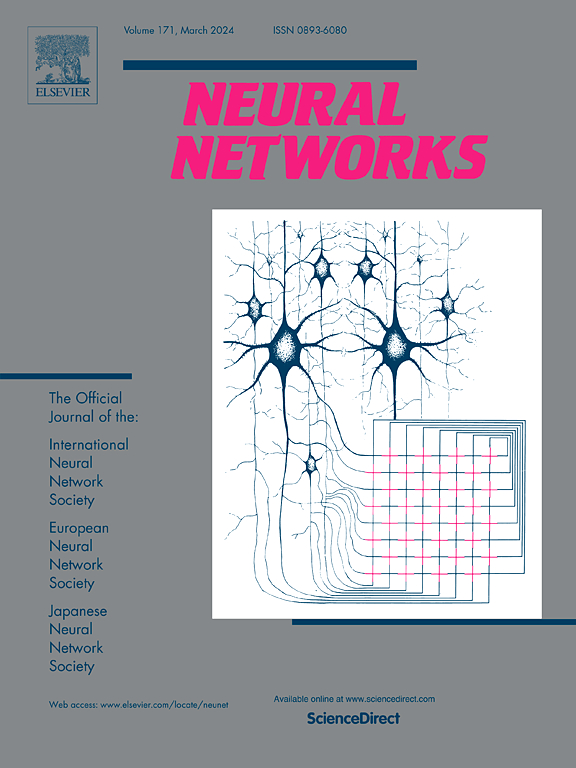Path-aware multi-scale learning for heterogeneous graph neural network
IF 6.3
1区 计算机科学
Q1 COMPUTER SCIENCE, ARTIFICIAL INTELLIGENCE
引用次数: 0
Abstract
Heterogeneous Graph Neural Networks (HGNNs) are a powerful tool for modeling data with diverse node and edge types, found in applications like social networks, recommendation systems, and knowledge graphs, including tasks such as node classification, link prediction, and graph classification. Based on information aggregation methods, HGNNs can be broadly categorized into meta-path-free and meta-path-based HGNNs. Recently, meta-path-based HGNNs have made significant advancements in both performance and interpretability. However, these methods often overlook the redundancy among meta-paths and fail to fully leverage the inherent information within the paths, such as path length and path type. Furthermore, their insufficient utilization of global information hinders comprehensive representation learning. To address these issues, we propose a path-aware multi-scale heterogeneous graph neural network named PM-HGNN. To better capture global information, PM-HGNN employs a global similarity-based mean aggregator to pre-compute neighbor aggregation information. Additionally, PM-HGNN exploits the inherent relevance and differences between meta-paths, enabling redundancy reduction and the dynamic assignment of weights. Experiments conducted on four real-world heterogeneous graph datasets revealed that PM-HGNN consistently exceeds the performance of current state-of-the-art methods in tasks related to node classification.
异构图神经网络的路径感知多尺度学习
异构图神经网络(hgnn)是一种强大的工具,用于对具有不同节点和边缘类型的数据进行建模,可以在社交网络、推荐系统和知识图等应用程序中找到,包括节点分类、链接预测和图分类等任务。基于信息聚合方法,hgnn可分为无元路径hgnn和基于元路径hgnn。最近,基于元路径的hgnn在性能和可解释性方面都取得了重大进展。然而,这些方法经常忽略元路径之间的冗余性,并且不能充分利用路径中的固有信息,例如路径长度和路径类型。此外,他们对全局信息的利用不足阻碍了全面的表征学习。为了解决这些问题,我们提出了一种路径感知的多尺度异构图神经网络PM-HGNN。为了更好地获取全局信息,PM-HGNN采用基于全局相似性的均值聚合器来预计算邻居聚合信息。此外,PM-HGNN利用元路径之间的内在相关性和差异,实现冗余减少和权重的动态分配。在四个真实的异构图数据集上进行的实验表明,PM-HGNN在与节点分类相关的任务中始终优于当前最先进的方法。
本文章由计算机程序翻译,如有差异,请以英文原文为准。
求助全文
约1分钟内获得全文
求助全文
来源期刊

Neural Networks
工程技术-计算机:人工智能
CiteScore
13.90
自引率
7.70%
发文量
425
审稿时长
67 days
期刊介绍:
Neural Networks is a platform that aims to foster an international community of scholars and practitioners interested in neural networks, deep learning, and other approaches to artificial intelligence and machine learning. Our journal invites submissions covering various aspects of neural networks research, from computational neuroscience and cognitive modeling to mathematical analyses and engineering applications. By providing a forum for interdisciplinary discussions between biology and technology, we aim to encourage the development of biologically-inspired artificial intelligence.
 求助内容:
求助内容: 应助结果提醒方式:
应助结果提醒方式:


